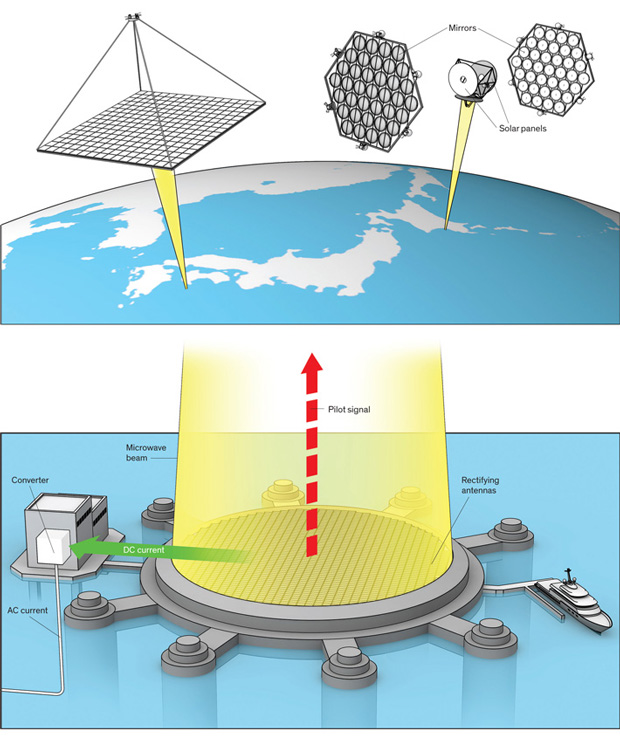Let's back up a small bit, what are microwaves, and why are they important to orbiting solar arrays? It has to do with the fact that microwaves are a form of electromagnetic radiation, same energy as radio waves, visible light, x-rays, and a whole host of other useful little tidbits of energy. As it turns out, microwaves are aptly suited to transmitting power, as the frequencies allow for very good energy densities without either passing through the receiver, or getting scattered by the atmosphere.
Let's talk for a moment about electromagnetic waves. If you remember any high school physics, you'll know that EM (electromagnetic) radiation are waves with varying frequencies that carry energy. This energy that is contained in the waves can be used for different things, making light (reflection), sending transmissions (radio), and even for sending power (microwaves). But we are going to focus on the last of those, microwaves.
Now, as stated before, microwaves are useful because of their energy density is high enough where they don't pass through the objects that they're interacting with, and low enough that they don't slam into the atmosphere and scatter, wasting the energy. This lets us 'beam' down the power onto a receiving dish like in the figure to the right, and create power for usage.
The concept is actually fairly simple, and is perhaps best visualized in the figure to the right. You have you power generation source located in orbit, with a large microwave transmitter pointed at the surface of the planet. On the receiving end, you would have a large dish that was the receiver of all that beamed power, and would send it to the local power grid, and/or some other use.
However, there is power loss associated with doing this, and depending on the type of technique you use to beam the microwaves, you lose more or less. But as demands for alternate sources of power increase, the idea of having a fairly small land power plant that can receive power from an orbital facility that takes up no ground space becomes appealing for countries like Japan, who recently suffered an accident with their nuclear power supply, and are now attempting to find more secure ways of providing power, and do not have the landmass needed for large ground based renewable energy sources.

https://www.google.com/url?sa=i&rct=j&q=&esrc=s&source=images&cd=&ved=0CAQQjBw&url=https%3A%2F%2Fshop.panasonic.com%2Flearn%2Fmicrowaves%2Fmicrowave-inverter-html5%2Fimg%2Fmicrowave.png&ei=ljZ1VM_YNsHuiALo54CoAQ&psig=AFQjCNFWRp8q28-j5FvLz3JIKcZeIH1Zcw&ust=1417054202106674

http://spectrum.ieee.org/img/how-to-beam-clean-720-1398188152346.jpg